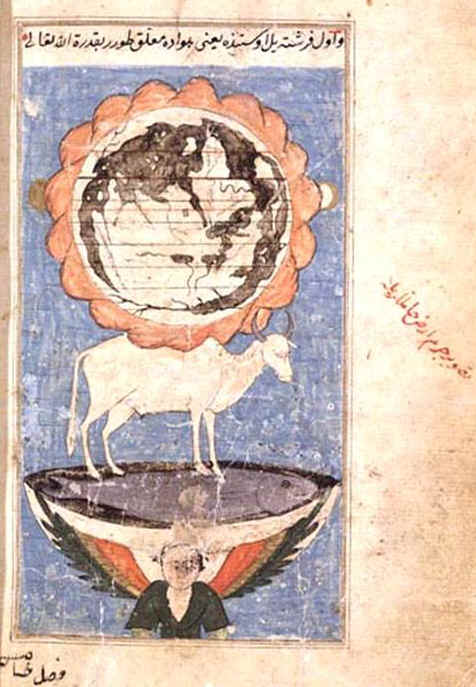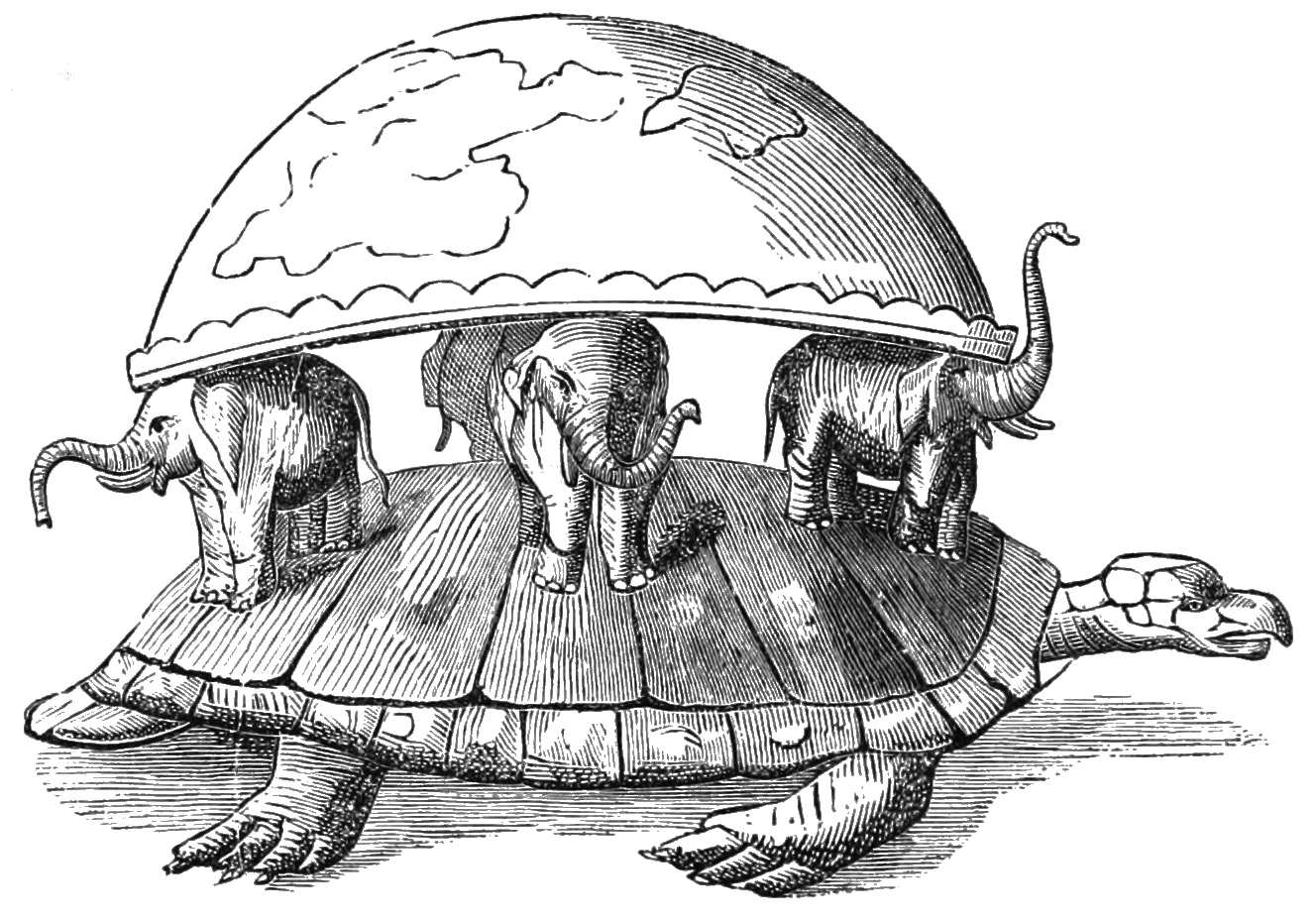|
Tur (Bosnian-Slavic Mythology)
Tur is a Slavic mythical creature that originated in central Bosnia and Herzegovina. According to tales, Tur is a giant bull that holds the Earth on its back, akin to Kujata, the ox that helps in holding the world in Islamic mythology, or the World Elephant. Whenever he moves his horns, an earthquake happens. Should Tur one day move his whole body, this would cause the end of the world. Description He is described as a giant black bull with curved, pointy horns. See also *Gugalanna *Kujata (mythology) Kuyūthā ( ar, كيوثاء) is the cosmic bull in medieval Islamic cosmography. It is said to carry on its back the angel who shoulders the earth and the rock platform upon which the angel stands. The bull is said to stand on the giant fish or ... References {{Reflist Slavic mythology Mythological bulls Mythological bovines Slavic legendary creatures World-bearing animals ... [...More Info...] [...Related Items...] OR: [Wikipedia] [Google] [Baidu] |
Slavic Mythology
Slavic mythology or Slavic religion is the religious beliefs, myths, and ritual practices of the Slavs before Christianisation, which occurred at various stages between the 8th and the 13th century. The South Slavs, who likely settled in the Balkan Peninsula during the 6th–7th centuries AD, bordering with the Byzantine Empire to the south, came under the sphere of influence of Eastern Christianity, beginning with the creation of writing systems for Slavic languages (first Glagolitic, and then Cyrillic script) in 855 by the brothers Saints Cyril and Methodius and the adoption of Christianity in Bulgaria in 863. The East Slavs followed with the official adoption in 988 by Vladimir the Great of Kievan Rus'. The West Slavs' process of Christianization was more gradual and complicated. The Moravians accepted Christianity as early as 831, the Bohemian dukes followed in 845, Slovaks accepted Christianity somewhere between the years 828 and 863, but the Poles accepted it much later ... [...More Info...] [...Related Items...] OR: [Wikipedia] [Google] [Baidu] |
Bosnia And Herzegovina
Bosnia and Herzegovina ( sh, / , ), abbreviated BiH () or B&H, sometimes called Bosnia–Herzegovina and often known informally as Bosnia, is a country at the crossroads of south and southeast Europe, located in the Balkans. Bosnia and Herzegovina borders Serbia to the east, Montenegro to the southeast, and Croatia to the north and southwest. In the south it has a narrow coast on the Adriatic Sea within the Mediterranean, which is about long and surrounds the town of Neum. Bosnia, which is the inland region of the country, has a moderate continental climate with hot summers and cold, snowy winters. In the central and eastern regions of the country, the geography is mountainous, in the northwest it is moderately hilly, and in the northeast it is predominantly flat. Herzegovina, which is the smaller, southern region of the country, has a Mediterranean climate and is mostly mountainous. Sarajevo is the capital and the largest city of the country followed by Banja Luka, Tu ... [...More Info...] [...Related Items...] OR: [Wikipedia] [Google] [Baidu] |
Kujata
Kuyūthā ( ar, كيوثاء) is the cosmic bull in medieval Islamic cosmography. It is said to carry on its back the angel who shoulders the earth and the rock platform upon which the angel stands. The bull is said to stand on the giant fish or whale, Bahamut. The bull is variously described as having 40,000 horns and legs, or as many eyes, ears, mouths and tongues in the oldest sources. The number of appendages can vary in later versions. Its breathing is said to control the tides of the ocean. Kīyūbān ( ar, کیوبان) or Kibūthān ( ar, کبوثان) also appear in printed editions of Qazwini's cosmography. These have been claimed to be corruptions of Leviathan ( ar, لوياتان). Alternate names include Al-Rayann. Kuyootà, Kuyoothán were forms of the name as transcribed by Edward Lane, and given as Kuyata (Spanish), Kujata (first English translation, 1969), and Quyata (revised English translation) in various editions of Jorge Luis Borges's ''Book of Imaginary B ... [...More Info...] [...Related Items...] OR: [Wikipedia] [Google] [Baidu] |
Islamic Mythology
Islamic mythology is the body of myths associated with Islam and the Quran. Islam is a religion that is more concerned with social order and law than with religious ritual or myths. ''The Oxford Companion to World Mythology'' identifies a number of traditional narratives as "Islamic myths". These include a creation myth and a vision of afterlife, which Islam shares with the other Abrahamic religions, as well as the distinctively Islamic story of the '' Kaaba''. The traditional biography of the Islamic prophet Muhammad, who plays a central role in Islamic teachings, is generally recognized as being largely historical in nature, and Islam depends less on mythology than Judaism and Christianity. However, the canonical narrative includes two key supernatural events: the divine revelation of the Quran and the Isra and Mi'raj — the night journey to Jerusalem followed by the ascension to the Seventh Heaven. In addition, Islamic scriptures contain a number of legendary narratives ... [...More Info...] [...Related Items...] OR: [Wikipedia] [Google] [Baidu] |
World Elephant
The Ashtadiggajas () is a group of eight legendary elephants that appear in Hindu cosmology, serving as the guardians of the eight zones of the universe. There are also eight female elephants that stand beside the Ashtadiggajas, referred to as the Ashtadikkarinis. List There are a total of eight Ashtadiggjas and Ashtadikkarinis that stand guard over the eight zones: Literature Besides the Ashtadiggajas, there are four elephants who support the earth from the four directions from the netherworld, whose names are given in the Ramayana: Virūpākṣa (east), Mahāpadmasama (south), Saumanasa (west), and Bhadra (north). In popular culture The popular rendition of the World Turtle supporting one or several World Elephants is recorded in 1599 in a letter by Emanual de Veiga. Wilhelm von Humboldt claimed, without any proof, that the idea of a world-elephant maybe due to a confusion, caused by the Sanskrit noun Nāga having the dual meaning of "serpent" and "elephant" (named for ... [...More Info...] [...Related Items...] OR: [Wikipedia] [Google] [Baidu] |
Gugalanna
In Sumerian religion, Gugalanna ( or ) is the first husband of Ereshkigal, the queen of the underworld. His name probably originally meant "canal inspector of An" and he may be merely an alternative name for Ennugi. The son of Ereshkigal and Gugalanna is Ninazu. In ''Inanna's Descent into the Underworld'', Inanna, the goddess of love, beauty, sex, and war, tells the gatekeeper Neti that she is descending to the Underworld to attend the funeral of "Gugalanna, the husband of my elder sister Ereshkigal". Some scholars consider Gugalanna to be the same figure as the Bull of Heaven, slain by Gilgamesh and Enkidu in the ''Epic of Gilgamesh The ''Epic of Gilgamesh'' () is an epic poetry, epic poem from ancient Mesopotamia, and is regarded as the earliest surviving notable literature and the second oldest religious text, after the Pyramid Texts. The literary history of Gilgamesh ...''. References Bibliography * * * * {{MEast-myth-stub Chthonic beings Mesopotamian gods Mytho ... [...More Info...] [...Related Items...] OR: [Wikipedia] [Google] [Baidu] |
Kujata (mythology)
Kuyūthā ( ar, كيوثاء) is the cosmic bull in medieval Islamic cosmography. It is said to carry on its back the angel who shoulders the earth and the rock platform upon which the angel stands. The bull is said to stand on the giant fish or whale, Bahamut. The bull is variously described as having 40,000 horns and legs, or as many eyes, ears, mouths and tongues in the oldest sources. The number of appendages can vary in later versions. Its breathing is said to control the tides of the ocean. Kīyūbān ( ar, کیوبان) or Kibūthān ( ar, کبوثان) also appear in printed editions of Qazwini's cosmography. These have been claimed to be corruptions of Leviathan ( ar, لوياتان). Alternate names include Al-Rayann. Kuyootà, Kuyoothán were forms of the name as transcribed by Edward Lane, and given as Kuyata (Spanish), Kujata (first English translation, 1969), and Quyata (revised English translation) in various editions of Jorge Luis Borges's ''Book of Imaginary B ... [...More Info...] [...Related Items...] OR: [Wikipedia] [Google] [Baidu] |
Mythological Bulls
Myth is a folklore genre consisting of narratives that play a fundamental role in a society, such as foundational tales or origin myths. Since "myth" is widely used to imply that a story is not objectively true, the identification of a narrative as a myth can be highly controversial. Many adherents of religions view their own religions' stories as truth and so object to their characterization as myth, the way they see the stories of other religions. As such, some scholars label all religious narratives "myths" for practical reasons, such as to avoid depreciating any one tradition because cultures interpret each other differently relative to one another. Other scholars avoid using the term "myth" altogether and instead use different terms like "sacred history", "holy story", or simply "history" to avoid placing pejorative overtones on any sacred narrative. Myths are often endorsed by secular and religious authorities and are closely linked to religion or spirituality. Many soc ... [...More Info...] [...Related Items...] OR: [Wikipedia] [Google] [Baidu] |
Mythological Bovines
Myth is a folklore genre consisting of narratives that play a fundamental role in a society, such as foundational tales or origin myths. Since "myth" is widely used to imply that a story is not objectively true, the identification of a narrative as a myth can be highly controversial. Many adherents of religions view their own religions' stories as truth and so object to their characterization as myth, the way they see the stories of other religions. As such, some scholars label all religious narratives "myths" for practical reasons, such as to avoid depreciating any one tradition because cultures interpret each other differently relative to one another. Other scholars avoid using the term "myth" altogether and instead use different terms like "sacred history", "holy story", or simply "history" to avoid placing pejorative overtones on any sacred narrative. Myths are often endorsed by secular and religious authorities and are closely linked to religion or spirituality. Many soci ... [...More Info...] [...Related Items...] OR: [Wikipedia] [Google] [Baidu] |
Slavic Legendary Creatures
Slavic, Slav or Slavonic may refer to: Peoples * Slavic peoples, an ethno-linguistic group living in Europe and Asia ** East Slavic peoples, eastern group of Slavic peoples ** South Slavic peoples, southern group of Slavic peoples ** West Slavic peoples, western group of Slavic peoples ** Slavic Americans, Americans of Slavic descent * Anti-Slavic sentiment, negative attitude towards Slavic peoples * Pan-Slavic movement, movement in favor of Slavic cooperation and unity * Slavic studies, a multidisciplinary field of studies focused on history and culture of Slavic peoples Languages, alphabets, and names * Slavic languages, a group of closely related Indo-European languages ** Proto-Slavic language, reconstructed proto-language of all Slavic languages ** Old Church Slavonic, 9th century Slavic literary language, used for the purpose of evangelizing the Slavic peoples ** Church Slavonic, a written and spoken variant of Old Church Slavonic, standardized and widely adopted by Sl ... [...More Info...] [...Related Items...] OR: [Wikipedia] [Google] [Baidu] |




-fol34-Sisteme_du_monde.jpg)

_Geraint.jpg)